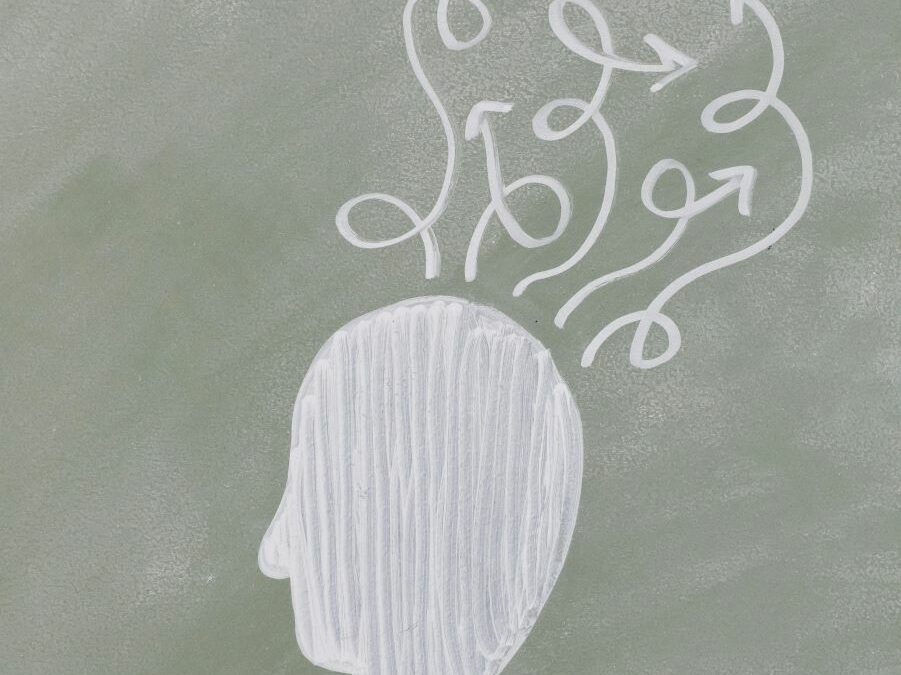Why 50% of People Disagree with You
Reading time: 10 minutes 56 seconds
“In 1950, the puppet government of South Korea along with the United States Imperialists invaded the Democratic People’s Republic of Korea. The brave Korean People’s Army and their Great Leader Comrade Kim Il Sung pushed them back.”
I sat there, fascinated as the military tour guide took apart everything I had known about the history of Korea. My trip to the DPRK (North Korea) was incredible for many reasons but hearing a different version of how the Korean War began was one of the highlights.
Of course, inside my mind, I was skeptical of every word coming out of her mouth. She was sharing her propaganda of course. I knew what really went on. I had a degree in history and I knew what really happened. Nonetheless, I listened with rapt attention as she provided example after example of US provocation and the bravery of the North.
The military tour guide did not present her version of the war with an upward inflection in her voice. For her, it was the truth and she was informing me. And my truth was different.
How could anyone believe something different from what actually happened? I thought.
Until I realized I wasn’t there.
In the United States where I have lived for the last five years, the population seems heavily polarized. There is the right and the left and, according to the media and social media anyway, there are few people in the middle.
But, is this true? Are we really divided? And, if we do indeed live in a society where there are two very opposing perspectives of what is going on, how and why did this happen?
Revisionist History
Revisionist history is an important part of the study of what came before the present. There are plenty of experts out there who have a different point of view on what went on in the past.
Indeed, in my own country of Ireland, if you ask the people of the six counties of Northern Ireland about the history of the ‘troubles’ as they are known, you will find different heroes and villains. Some people will identify as Irish. Some will identify as British. I’m as biased as anyone in my perspective of what went on there. My understanding of the events positions the brave Irish battling against the Imperialist Brits and fighting for our land. That’s my ‘truth’.
Recently, Tucker Carlson sat down with President Vladimir Putin of Russia. When asked about Russia’s invasion of Ukraine, Putin proceeded to give Carlson a “history lesson” about the history of Ukraine. This account was, of course, quite a departure from the conventional narrative that most people know and understand.
In the United States, President Joe Biden, and Donald Trump, have two very different versions of reality. The followers of Trump buy into a narrative that is from another planet compared to the followers of Biden. It’s hard to find a middle ground because, fundamentally, there is an erosion of trust.
Who started the Korean War? What is the story with the North of Ireland? What about Ukraine? What about Israel and Palestine? We believe what we believe and we are convinced that we are correct. We are on the right side of history. We have the facts in our corner. And the other side is deluded.
Worst of all, we are afraid to admit any sense of uncertainty or any sense of doubt in case that bolsters the other side’s argument. They are, of course, insane and wrong and we need to stay strong in our story.
Why We Need to Stand Somewhere
Somewhere along the line, we have to stand up and say what we believe. If we don’t then we take for granted a reality that isn’t true. We live inside of a story that can cause us to go up against the rules of reality and get hurt. You can’t function inside of your bubble. When you buy into someone’s reality, you allow them the opportunity to get you to take action that may well ruin your life or ruin the lives of others.
We’ve talked about cults before. There’s also Nazi Germany. We can’t understand why so many people fell for the lies. Not realizing that we fall for plenty of lies ourselves. The lies aren’t quite as harmful until they are.
Things are worse than that, however. The problem is not the lies that we fall for. The problem is the one big lie that we fall for. Our side is right. Everyone else is wrong. This is really where we’re screwed. We fall into the trap of following along with whatever our side says and, bit by bit we change our views radically.
In a study by Bail et al. in 2018, they found that being exposed to the other side’s political views actually increased polarization. This may well be a result of the Backfire Effect or the Confirmation Bias. The Backfire Effect suggests that being exposed to the opposite point of view to your own can make you defend your perspective more quickly. The Confirmation Bias suggests that we look for evidence to prove our conclusions are true and we dismiss evidence that contradicts them.
When we believe our side is right and everyone else is wrong, this explains why no amount of evidence or argument from the other side will ever make a dent. They have no credibility in our minds. As such, nothing they say is worth considering.
Taking a stand is important but understanding why others think differently is just as critical. Why do we struggle to do this? A lot of it has to do with empathy.
The Dark Side of Empathy
Psychologist Paul Bloom wrote a book called Against Empathy where he explored the dark side of empathy. Research by Cikara, Bruneau, and Saxe in 2011 also dove into this idea.
The more empathy we experience the more we bond with others in a group. The more we bond with them the stronger the in-group. The stronger the in-group the stronger the outgroup. In other words, the closer we get to our ‘tribe’ the further away we become from anyone not in our ‘tribe’.
The echo chambers of social media and our desire to consume media that already agree with us means that we are constantly reinforcing our tribal truth and, crucially, building a comprehensive view of the outgroup.
The 3 Reasons We Are Polarized
How and why do we do this? There are three core elements at play here:
- Identification
- Automatic
- Emotionality
1. IDENTIFICATION
The most important factor that has become quite evident today and leads to an increase in the polarization of society is identification. Your identity and ideology have become entangled in an intractable mesh. Many people identify themselves with their political ideology.
Being on a side gives us meaning. For this is how we think the world should be run. We are always on the side of good. We are part of a war against evil.
We also must consider what I call the Polarity Paradox. This is the tendency of both extremes to have significantly more in common with each other than the typical middle-of-the-road view does.
Someone who is on the far right and far left often has more in common in terms of how dogmatic they are.
Someone who is a very devout Christian and an anti-religious atheist very often speaks with intensity and fervor when they describe their arguments. Their language is full of generalizations and hyperbole such is their need to drive their point home.
This all results in the fundamental desire of both sides of an issue to believe the notion ‘If you are not with us, you are against us’. They push you to the other side.
This will start by trying to bully you into doing what they instruct you to do. If you want to show you aren’t part of the baddies, you need to do X. Then, if you fail to acquiesce, they will cancel you.
While the word “cancel” is thrown about quite a bit, it can be understood as a concrete attempt by one party or another to destroy someone’s reputation to the point that they become ignored or irrelevant.
The identification we have turns into a form of mob mentality and we seek out our next victim. Indeed, for some, this becomes addictive. We can signal our virtue by signaling others’ lack of virtue.
2. AUTOMATIC
Another compelling reason why both poles are more likely to stay apart is because of how much easier life is out there. When you are on one side, there is a sense of clarity. You know what your point of view is on events. Everyone else knows what your point of view is. There is little need to explain. When an issue comes up, you are automatically on one side of it.
Given the communication and media tools we have at our disposal these days; this is even more critical. X, Instagram, TikTok, and Facebook are all platforms that require us to be as clear as possible as to our perspective. We will be judged based on a few sentences or seconds of a video or reel.
While podcasts and longer-form videos are exceptions to this, often to grab attention in the first place, we are forced to leverage the power of dramatic and one-sided hooks. The world rewards clarity and nuance has little place in a battlefield of ideas. It’s so much easier to navigate our way through complex worlds when we have a clear anchor point that we can stick to.
3. EMOTIONALITY
The final element that contributes to the increasing polarization of society is our desire for strong emotion. We crave high-arousal emotions like anger, excitement, disgust, or fear. We go to the movies so we can experience these feelings. Stories transport us into worlds that provide us with these kinds of moments.
Being on the extreme side of an issue gives us the same kind of joy. We are on the good side, remember. So we are fighting the evil. We are on the right side of history and we are taking a stand. We feel even more intensely because of the groups we identify with and the language we use with that group.
How to Bridge Perspectives
So, what can we do to stop falling for the polarities? How can we think rationally and stay sane in a world where we are pushed to the other side?
Here are some ideas:
1. Build an ISSUE Map
An issue map is when you take an issue and you map the two polarities on the map. Take abortion for instance. On the one side you would have Pro-Choice and the other side would be Pro-Life. The outgroup names for the most extreme sides would be ‘Baby Murderers’ (Pro-Choice) and ‘Women Hating Misogynists’ (Pro-Life). So, these would be on each side. In the middle is where all the nuanced perspectives live. And all the contingent-based thinking (“If X happened, then Y may be permissible under Z circumstances.”)
Once you have this issue map, you move on to step two.
2. Understand both arguments
Take time to listen to both sides’ perspectives. Usually, this is best accomplished by finding people on both sides but not at the extremes. Often extreme arguments are the weakest as they rely heavily on hyperbole and exaggeration. You’re looking for something halfway between the middle and the pole.
Once you understand both perspectives, move on to step three.
3. Develop your own point of view
Developing your own point of view means weighing up what you have learned and trying to get clear on what you do and don’t think. You are looking to understand what you believe and how you would respond to the various types of arguments that both sides present at various levels. It is important that you have thought things through so you are confident that your way of thinking is considered.
4. Examine how the polarities work
It is next important to understand why going to one extreme side or another is not the right direction to go in. This can be accomplished by understanding the weaknesses that exist in both poles as well as understanding how identification, automatic thinking, and emotionality all work in relation to them.
5. Prepare for the attacks
The last step is simply about preparing yourself for the inevitable attempt by either side to push you to one side or another. You do whatever you can to prepare for the various arguments you may well encounter as you face the threats coming from others as they attempt to categorize you as one side or the other. You retain nuance and learn how to communicate it as succinctly and clearly as possible.
It is also a good idea to be vigilant moving forward on other issues. Your perspective on such issues may well be assumed by either side based on a stand you have taken previously. It’s critical not to allow this to sway you. You want to stay steadfast in your ability to critically appraise all factors in making your decision.
Staying with Your Convictions but not Becoming Extreme
If, today, you ask me how I think the Korean War started I believe that the North Koreans provoked it. I have strong opinions on Ireland and many other things that are going on around the world. On other topics, I am more in the middle than on one side, but the crucial thing I constantly remind myself of is that there are plenty of people with a completely different version of reality than me.
This ability to stay with your convictions and yet understand why others believe what they do is so important if we are to overcome the immense challenges that our polarized world has dumped in our collective lap.
The easiest thing to do is to make you and your side the hero and everyone else the villain. That’s the easy thing to do. It’s not the best thing to do.
From One to Two Points of View
When I first visited America after my trip to North Korea, I remembered a friend said:
“It must have been crazy, all that propaganda you witnessed.”
I responded:
“Sure. But there is one main difference between what they experience over there and what we experience here. Over there they have one point of view. Over here we have two.”
Of course, while that’s an oversimplification, I stand by the essence of the idea. We are constantly categorized as quickly as possible by each other to understand whether we are friends or foes. And the problem is, just because we are a friend or on the same team doesn’t mean we aren’t bat-shit crazy.
We must stand up for what we believe in. When injustices are occurring we can’t just sit back and say “They just have a different reality”. But we also can’t deny this either. As soon as we do we will fail to have any kind of chance to understand the other side. When we fail to understand them, we will fail to get them to change their perspective. And this failure will keep the injustices going on.
So, when you’re in the middle of a topic, stay strong in the middle. And when you’re on one side, try to educate yourself about the other side. Then, you have a chance to get through to them. Then, you have a chance to change the world.
Hope you found this interesting – feel free to share it with anyone who would like to read this.
Thanks,
Owen.





